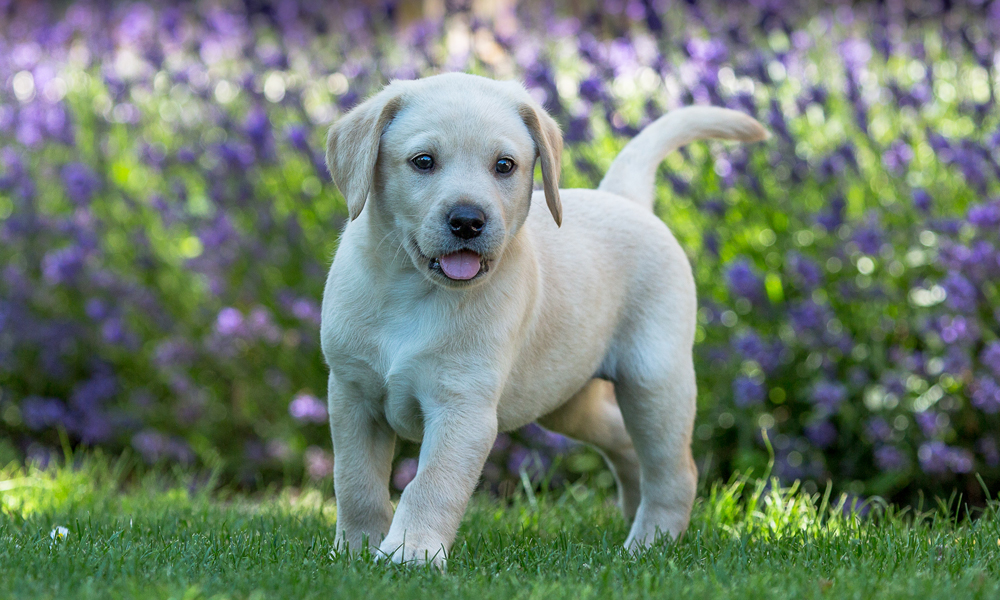Hip dysplasia is a serious and painful degenerative bone disease that starts in puppyhood, but can take years for pet parents to detect. As symptoms of hip dysplasia start showing later in life, your dog will mask their pain (as they often do), but you may notice a growing reluctance to move, particularly jumping up onto the bed or getting into the car or using the stairs. You may also notice a new sway in their gait.
In severe cases, hip dysplasia can lead to lameness in your dog. But the good news is early detection and treatment can stabilize your dog’s hips and joints, and help your dog live a long, happy life.
What is hip dysplasia in dogs?
Hip dysplasia develops in the dog’s growth stage with excessive looseness in the hip joint caused by a lack of uniform growth in the hip and joint. This loose hip joint isn’t functioning normally and causes abnormal wear and stress on surrounding support structures, which means hip bone and cartilage start taking wear, and the ligaments and muscles stretch. Over time the dog develops arthritis and degenerative joint disease.
There’s no cure for hip dysplasia, other than total hip replacement surgery. Vets can diagnose it during a routine visit by checking your dog’s hip movements and taking blood work to look for telltale signs of inflammation. Treatment and care will focus on stabilizing the joint and slowing the development through proper exercise and nutrition.
Symptoms of hip dysplasia in dogs
After years of bone degeneration caused by excess looseness in the hip, symptoms and mobility issues will start to appear in your dog.
- Increased hesitation to use stairs or jump into the car
- Appears wobbly while standing or walking
- Reluctant to get up from a lying-down position
- Bunny-hopping gait
- Lethargy, decreased interest in active activities
- Joint grating during movement
- Loss of muscle mass in the thighs
- Limping and lameness
- Decreased activity, particularly running
How to prevent hip dysplasia in dogs
Large-breed dogs are genetically predisposed to developing hip dysplasia, particularly Black Labs, German Shepherds, Great Danes, St. Bernards, Boxers, Bulldogs, and Australian Shepherds. A puppy’s odds of developing it double when a parent has it.
Hip dysplasia is an outcome of rapid growth of large-breed dogs during the puppy stage. Overfeeding your large-breed puppy can cause rapid growth. While you want to keep an eye on the portions you’re feeding your pet, it’s also important to understand that not all puppy food is alike. Large-breed puppies have different dietary needs than smaller breeds.
Large-breed puppy diet: These diets are formulated to meet the unique needs of large-breed puppies with the right balance of calories and nutrients, such as calcium, which help prevent the rapid growth that leads to hip dysplasia.
Measure your puppy’s food: Follow the serving recommendations on the bag of high-quality kibble. Also, set reminders to check in and make sure the portion is right for your puppy’s size and growth stage.
Transition at the right time: Large-breed dogs can take up to two years to reach full growth. Transition adult food when you know for certain your dog is fully grown.
Treatment for hip dysplasia in dogs
When it comes to hip dysplasia in dogs, treatment can range from dietary and lifestyle changes to surgery.
Surgery for hip dysplasia in dogs
Your vet may offer different options for surgery. Total hip replacement is often the first choice, but another option is a femoral head ostectomy (FHO), which replaces the ball joint. For puppies younger than 10 months old, a double or triple pelvic osteotomy makes cuts into the pelvic bone to improve the ball-and-socket joint.
Exercise
When hip dysplasia is diagnosed early in your dog’s life, exercise treatments slow the progression — particularly with a focus on muscle strengthening. Overdoing it can do more damage to bone and muscle, which is why it’s critical to get guidance from your dog’s vet.
Orthopedic braces
These specialty braces are designed for dogs with hip dysplasia to bolster support and security in the hip joints. Paired with exercise, a specially fitted brace can be an effective method to slow the progression.
Provide a ramp
Ramps provide a pain free means for dogs with hip dysplasia. Unlike stairs, where your dog is raising their knees and hips to get around, ramps requires only stepping and are far easier on aching, inflamed joints.
Medication and supplements
Your vet may prescribe anti-inflammatory medication to reduce swelling and pain in the joint area, and recommend supplements containing glucosamine sulfate that build and maintain your dog’s cartilage.
The key to managing hip dysplasia in dogs is understanding how it progresses and taking steps to slow it.
Help for dogs with hip problems
PureVita Hip & Joint Treats by NutriSource are enhanced with Glucosamine and Chondroitin as a tasty reward to bolster cartilage levels.
Keep your dollars local and pick up a bag at your local independently owned and operated pet supplier.


